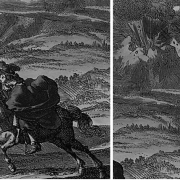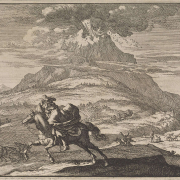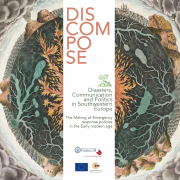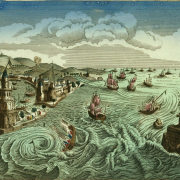The collection of essays in the section La società di antico regime e le esperienze della calamità. Memorie, pratiche di risposta (The Society of the Old Regime and Experiences of Calamity: Memories, Response Practices) in issue 2 of 2024 of the Rivista Storica Italiana, aims to evaluate the impact that extreme, seemingly exceptional, or unexpected events had on past societies.
The cases examined through the institutional, social, and cultural processes triggered by disasters in various territories of Spanish Italy between the 16th and 17th centuries, converge in outlining the changes in the ways in which calamities were interpreted and addressed by the societies of the Old Regime. The authors analyse the development of adaptive and preventive behaviours suggested by the experience or knowledge of past disasters and question the role that secular and religious institutions and the main social forces assigned to themselves in emergency situations.
Despite focusing on different chronologies and geographical areas and studing societies facing different types of threats, the essays by Thomas Labbé, Umberto Signori, Blythe Alice Raviola, and Domenico Cecere highlight the development of response practices based on observation, formalization of knowledge and action models, and transmission of experiences and memory.
The first contribution retraces the evolution of certain concepts within theological, legal, and political thought between the late Middle Ages and the early Modern Age. These provided public institutions with intervention models in case of “public calamity.” The other three explore how the institutions and societies of the State of Milan, the Kingdom of Naples, and the Kingdom of Sicily responded to droughts, floods, earthquakes, and volcanic eruptions, attempting to prevent and mitigate their effects.
Labbé proposes a sort of archaeology of the legal and political concepts on which today’s humanitarian policies are based. At the foundation of these is an ethic typical of the contemporary age that assigns a privileged space to emotions in giving meaning to the unfolding of events, particularly to the pain for deaths and compassion for victims. Hence, the need to examine the legal, theological, and political frameworks with which European societies between the 14th and 16th centuries tried to define the time of exception, understood as a suspension of the ordinary, and to regulate the consequent behaviours.
Similar issues are addressed in Umberto Signori’s contribution, which, starting from the study of the Phlegraean eruption of 1538, questions the established idea that the interventions of the viceroy Pedro de Toledo in favour of Pozzuoli were a form of institutional response to the damages caused by the natural event, a form of compassionate policy towards the affected city that risked being abandoned.
Military defence needs, the development of hydraulic knowledge, and the interaction between different institutional levels are at the centre of Blithe Alice Raviola’s contribution, which analyses various floods and droughts that affected the Po Valley area of the State of Milan between the 16th and 17th centuries.
Cecere, on the other hand, explores the responses of various institutions to the earthquakes and eruptions that plagued some areas of the Kingdom of Naples in the second half of the 17th century. The essay investigates the actions of the representatives of monarchical institutions, at times collaborative and at times in competition with those of other institutional actors, and notes a substantial continuity with past response measures, which prioritized fiscal and military issues, as well as the devotional sphere.
Go to the index of Rivista Storica Italiana n. 2, 2024














Leave a Reply
Want to join the discussion?Feel free to contribute!